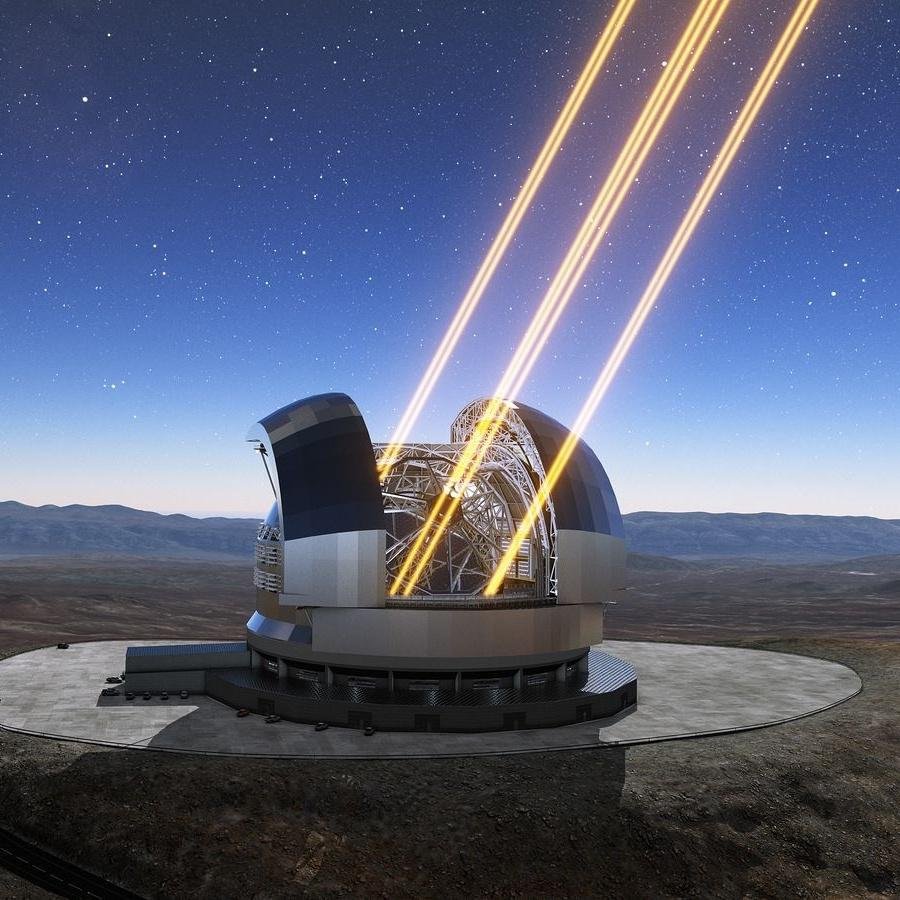Every week, TecMundo and #AstroMiniBR brings together five relevant and entertaining astronomical curiosities produced by the world’s collaborators. profile on twitter to spread the knowledge of this science, which is the oldest!
#1: Movement of the sun in the galaxy
???? O SOL NÃO ESTÁ PARADO
Assim como todas as outras coisas do Universo, o Sol também se movimenta.
Ele completa uma volta ao redor do centro da Via Láctea em aprox 225 milhões de anos!
Desde que nasceu, o Sol deu apenas 20 voltas ao redor da galáxia!!#AstroMiniBR pic.twitter.com/z4Q8Y2nyTA— Thiago Flaulhabe (@TFlaulhabe) July 6, 2022
Nothing in the universe is absolutely motionless. This is true from the small particles and molecules that make up our body, to large-scale structures such as groups and structures. galaxy clusters.
with the sun and solar system It’s no different: we’re spinning around the center of the Milky Way at an average speed of 828,000 km/h! You might think that’s a very high speed (and rightly!), but even so, it takes about 230 million years for the Sun to complete one revolution around the Milky Way!
This period is called the galactic year or the cosmic year. The galactic year provides a convenient and useful unit for representing cosmic and geological periods together. In contrast, the “billions of years” scale does not allow for a useful distinction between geological events, and the “millions of years” scale requires rather large numbers. Therefore, we can represent events such as the sunrise, which took place about 20 galactic years ago; The emergence of life on Earth, an event that occurred about 17 galactic years ago, and so on!
#2: Extremely Large Telescope!
Quando inaugurado em 2027, o ELT será o maior telescópio da Terra, com um espelho de 39 m.
Ele poderá medir a composição química de um objeto com magnitude 27, o equivalente a uma lâmpada caseira à distância de Vênus! #AstroMiniBR pic.twitter.com/sSZSShI0l7
— Thiago S Gonçalves (@thiagosgbr) July 5, 2022
The era of great advances in astronomical knowledge is about to take another giant leap forward! With the advent of super telescopes that open your eyes to the Universe, James Webb Space Telescope (JWST) The world of astronomy, which brought humanity its first records about the Cosmos this week, is preparing for another big surprise: the Extremely Large Telescope (ELT)!
The ELT will be an unprecedented ground-based telescope that will have a 39-metre main mirror and will be the world’s largest visible and infrared telescope! In addition to its unrivaled size, the ELT will be ready and expected to be operational in 2027, and will be equipped with a range of cutting-edge instruments designed to cover a wide range of scientific possibilities. Like JWST, ELT is expected to bring many remarkable discoveries about the Universe and expand our perception of the Cosmos.
The ELT is being built in the middle of the Atacama Desert in Chile, a privileged place in the world for astronomical observation. Once completed, the ELT will be able to capture 100,000,000 times more light than the human eye and examine the greatest scientific challenges of our time, such as detecting Earth-like planets around other stars in habitable zones where life may exist; investigating the nature of dark matter and dark energy; the study of stars in our galaxy and beyond; black holes; the evolution of distant galaxies and a few other topics of the distant Universe.
#3: The Milky Way Over the Serra da Mantiqueira
Longe da poluição luminosa das áreas urbanas, a Via Láctea mergulha espetacularmente no horizonte norte sobre a Serra Mantiqueira em São Francisco Xavier (SP). @ceusestrelados #AstroMiniBR pic.twitter.com/mO994e1iyb
— Projeto Céu Profundo (@CeuProfundo) July 4, 2022
The recording above shows the beautiful combination of the Milky Way on the mountain range Serra da Mantiqueira that stretches across Sao Paulo, Minas Gerais, and Rio de Janeiro. The photo taken by the Deep Sky team is an excellent example of how light pollution negatively affects astronomical contemplation and observation. If you go out on a clear night in your neighborhood, chances are you’ll see most or all of the famous Southern Cross cluster plus a handful of bright stars or planets. What you probably won’t see is the Milky Way.
As light pollution increases, sky glare from unprotected lights makes the night sky brighter and obstructs view of the Milky Way and darkens objects in the sky, making it more difficult to identify and observe celestial objects and phenomena.
#4: Does the Moon have more craters than Earth?
Por que a Lua tem tantas crateras e a Terra não?
Um dos motivos¹ é que a Lua não tem uma atmosfera densa que impeça meteoros se desintegrem, como acontece aqui na Terra (que vemos como estrelas cadentes!)#AstroMiniBR pic.twitter.com/T8YxI0L0dp
— Ana Carolina Posses (@astroposses) July 5, 2022
You’ve seen this, if not with a small telescope, in photographs of the Moon’s surface and its main feature: the numerous impact craters that have formed over billions of years of formation and evolution. However, have you ever wondered why the same thing isn’t happening on Earth? Since it’s bigger than the Moon, why doesn’t it have so many craters?
The fact is that although the Earth also has craters formed by the impact of asteroids and meteorites on the surface, the Earth’s atmosphere protects it from most objects that enter it. In addition, the geological activity of the Earth, as well as the enormous ocean mass and vegetation, greatly reduces the presence of craters!
#5: Soviet mission Zond 5
em 1968, a missão Zond 5 da agência espacial da União Soviética levou organismos vivos pra passear no espaço. dentre a tripulação, tivemos minhocas, plantas e um par de tartaruguinhas ??
os ilustres passageiros fizeram um sobrevoo lunar e voltaram à Terra com vida.#AstroMiniBR pic.twitter.com/lUFN63WnfM
— yanna martins franco (@martins_yanna) July 4, 2022
Zond 5 was a Soviet spacecraft belonging to the Zond space program that operated between 1964 and 1970. In September 1968, Zond 5 became the second spacecraft to circumnavigate and orbit the Moon, and the first lunar mission in history to include animals and return safely to the Moon. Soil.
Zond 5 crewed two turtles, fruit fly eggs and some plants. One of the main results of the mission was that almost no biological changes occurred in these creatures due to space travel.
Source: Tec Mundo
I am Bret Jackson, a professional journalist and author for Gadget Onus, where I specialize in writing about the gaming industry. With over 6 years of experience in my field, I have built up an extensive portfolio that ranges from reviews to interviews with top figures within the industry. My work has been featured on various news sites, providing readers with insightful analysis regarding the current state of gaming culture.













